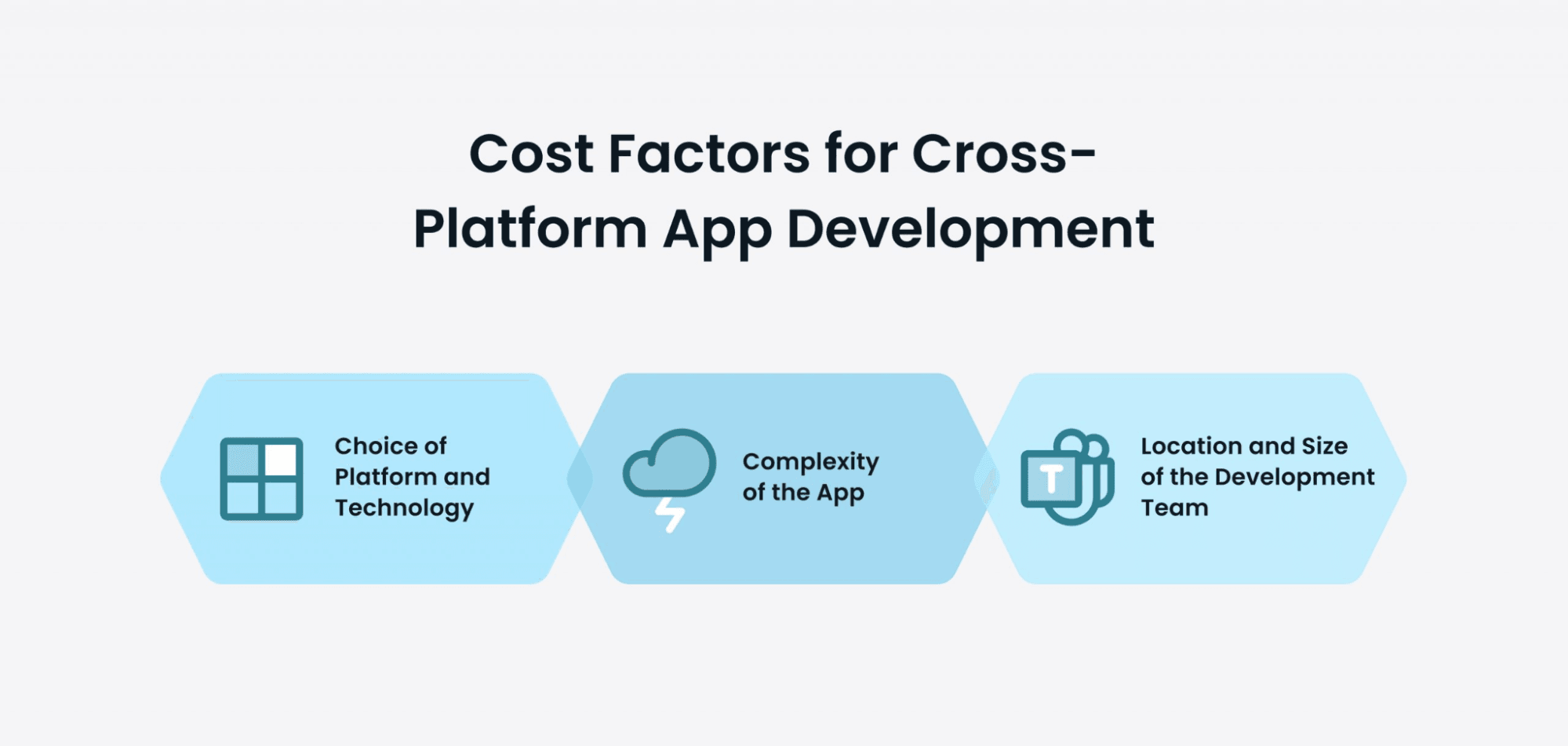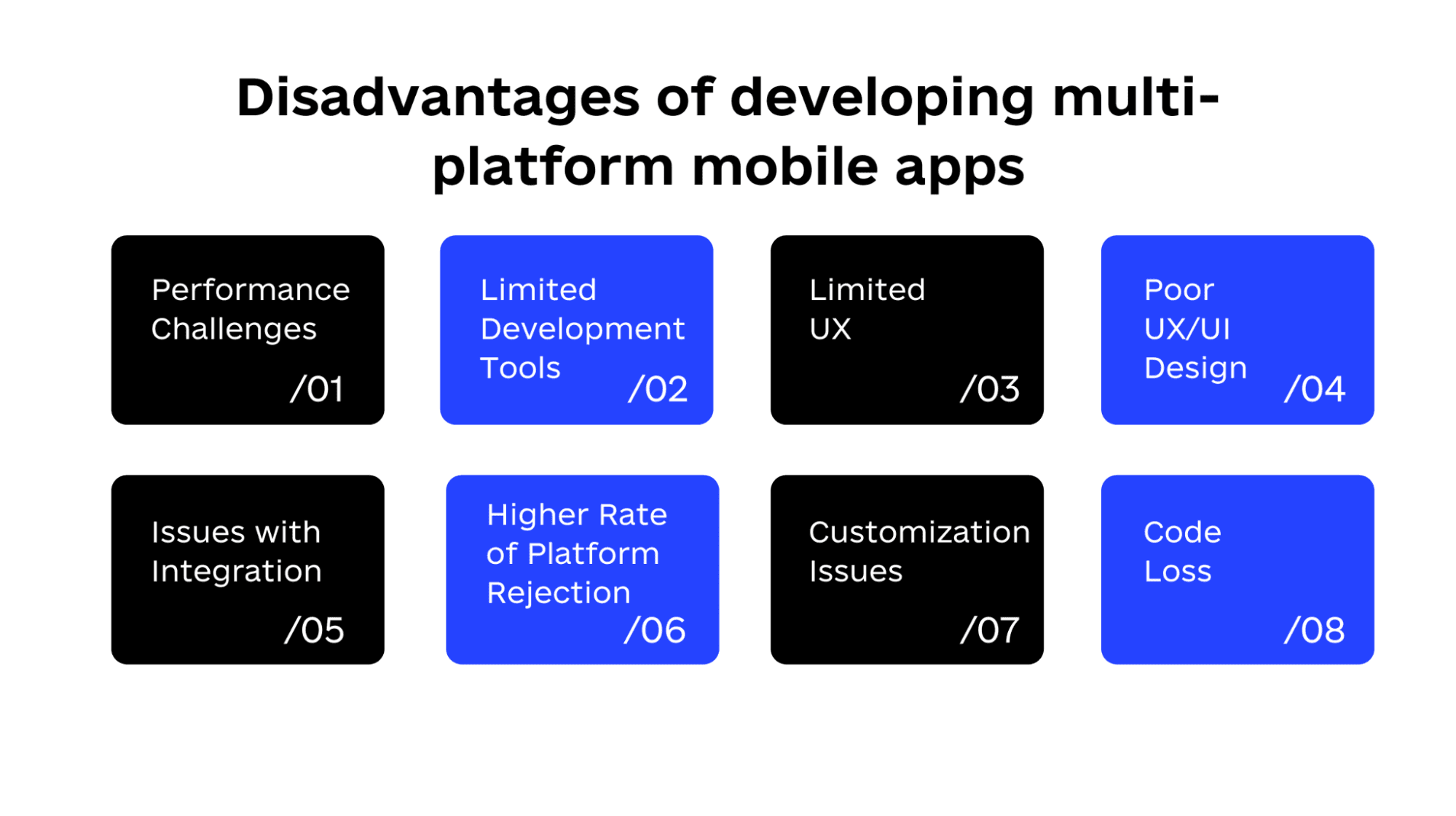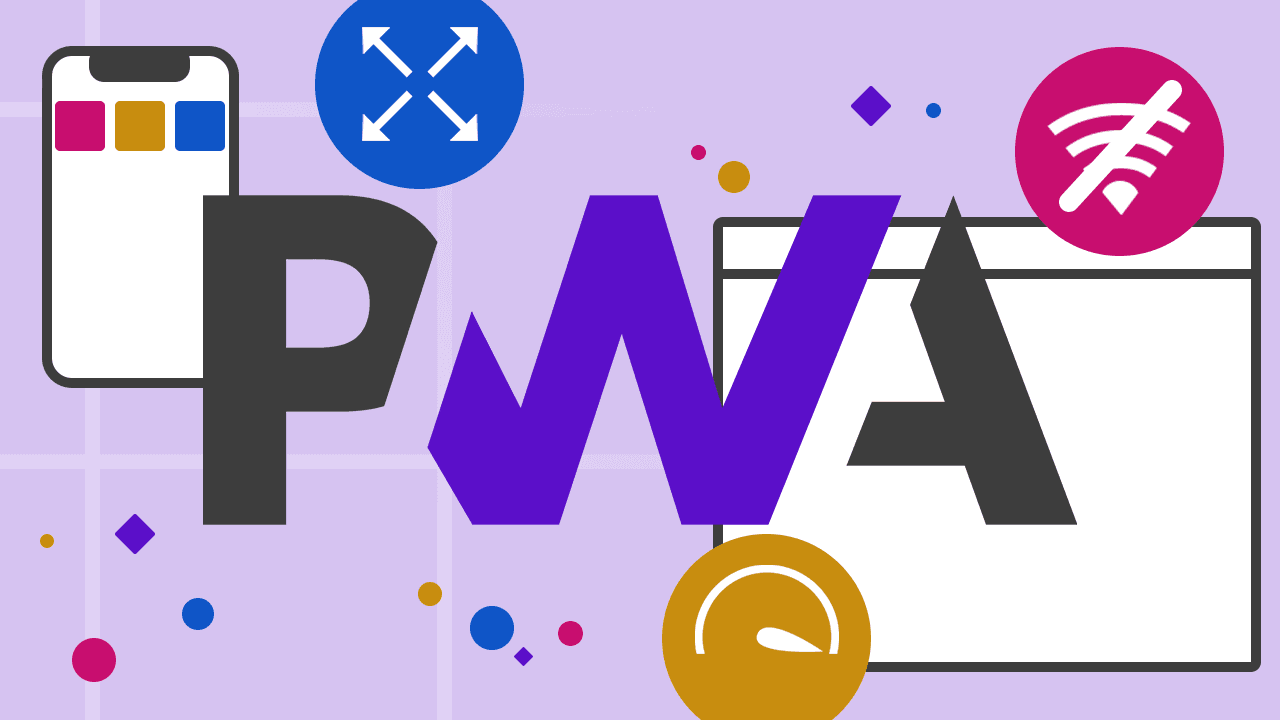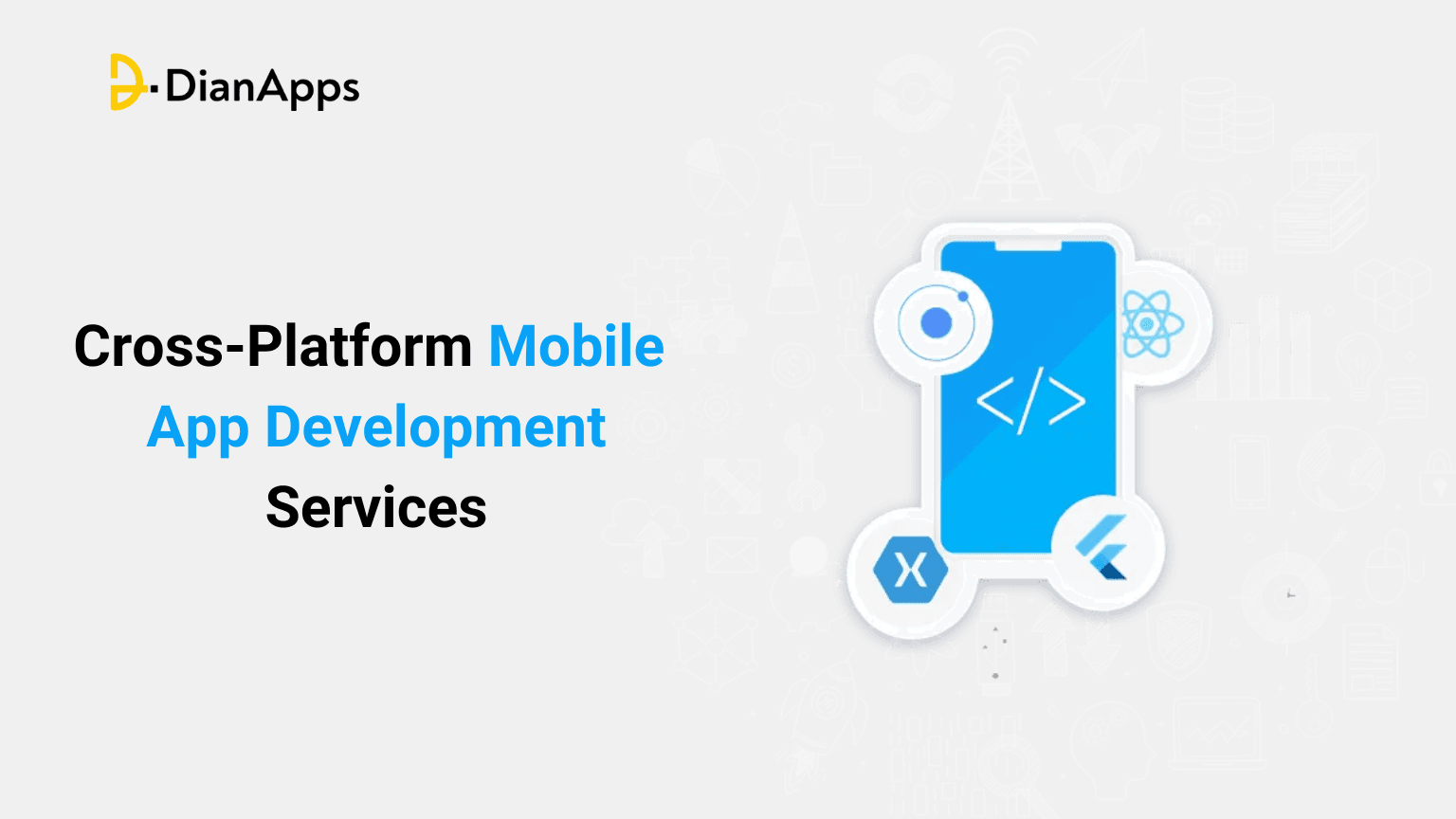Mobile is becoming the norm throughout the world. Today’s businesses must be able to connect with their customers across a range of channels and gadgets.
Thus, cross-platform mobile app development has gained popularity as an effective solution to this issue.
Having a single app that works seamlessly across several platforms may benefit businesses in many ways, such as decreased expenses and time, increased productivity, and a wider audience reach.
In this post, we’ll explore the many benefits of cross-platform mobile app development and why it can be the best choice for your business.
Before we proceed ahead let’s read about Cross-platform Vs Native app development!
What is Cross-Platform Mobile App Development?
Cross-platform mobile app development is the process of creating apps that utilize a single codebase to function across several mobile operating systems. Unlike native app development, which creates code, especially for each platform, this approach is distinct.
By using cross-platform development techniques, developers may create mobile applications that appear and function the same across a range of devices, saving a significant amount of time and money.
In addition, cross-platform apps typically use native code to optimize speed and produce a more native-like experience on each device.
Since cross-platform development streamlines the app creation process, it is an attractive option. Developers may concentrate on a single project, guaranteeing quicker release and simpler maintenance, as opposed to overseeing distinct development projects for iOS and Android devices.
If you are willing to hire iOS developers for your cross-platform needs then look no further than DianApps. Read this guide for the reference!
Because of its effectiveness, cross-platform app development is becoming a popular choice for companies who want to expand their customer base without sacrificing quality or incurring exorbitant development expenses.
The Growing Importance of Cross-Platform App Development

Quicker Growth
The development process is typically faster when using a common codebase by developers as opposed to creating unique apps for every platform. This is because they don’t have to duplicate work for every platform by reusing code. In a competitive industry, quicker development might result in cheaper costs and a quicker time to market for the app.
Economical
Creating applications for many platforms might be more expensive than creating cross-platform software. Because updates and bug patches can be applied to a single codebase rather than several platform-specific codebases, it can help lower maintenance expenses.
Greater-Scope
Creating an application that functions across many platforms helps expand your user base and boost your market share. Instead of focusing on a single platform, you may target people across several.
Continual User Experience
Cross-platform applications provide a unified user experience across several platforms—they have the same appearance and functionality. Improved user happiness and loyalty can result in increased engagement and retention when there is consistency in the user experience.
Easy Maintenance
Cross-platform programs just require one codebase, making upgrades and maintenance quick and simple. Instead of working on several platform-specific codebases, developers only update one codebase, which lowers maintenance costs and minimizes app downtime.
Obtaining Native Features
Cross-platform frameworks provide developers access to the device’s native capabilities and functionalities, such as the GPS and camera. This may improve the user experience and provide each platform with unique features.
If you ever wanted to implement a camera in your app, you must read about React Native camera: know library comparison!
Quick Prototyping
Cross-platform development is the best way to test app ideas across many platforms and quickly construct prototypes. Before devoting time and money to development, this might assist you in determining which app concept has the greatest potential.
Prospective-Looking
Businesses may future-proof themselves against shifts in the market, like rearranging the market share of operating systems, by creating cross-platform applications. Without having to start from scratch, apps may be readily changed to work on new platforms or devices.
Cost Considerations in Cross-Platform Development

When choosing a development technology for creating mobile applications, cost is an important consideration. How can you reduce the cost of mobile apps? Well, as cross-platform development allows code to be reused across platforms, it can result in considerable cost savings over native app development. This method lowers the original development costs as well as continuing maintenance costs by reducing the amount of code that has to be developed and maintained.
These expenses may be balanced by choosing the appropriate cross-platform development technology, guaranteeing an affordable way to create and manage mobile applications.
If you are willing to know one of the top mobile app technologies–5G & its impact, then you just read along this blog!
1.Faster Development
Cross-platform solutions eliminate the need for developers to create separate Android and iOS projects by allowing them to work with a single codebase that manages both iOS and Android. Everything is located in one location.
Cross-platform apps support several devices and are developed as single projects. Because a large portion of an application’s code may be shared between platforms, development times are significantly reduced.
2. Reduced expenses
Cross-platform apps may be around 30% less expensive than native ones when developing distinct iOS and Android apps. Large portions of code and other assets may be shared between the iOS and Android platforms, so you only need to create one project for each platform.
3. A larger viewership
When they first begin to design mobile apps, many app owners are faced with the dilemma of whether to start with an iOS or Android application. There is always a trade-off that may be quite expensive, regardless of which platform has a larger market.
With a cross-platform solution, you can target both markets at once and reach a significantly larger audience right now. To expedite product delivery, you may also create for one platform first then iteratively add support for a second platform.
4. Platform coherence
There are some variations in the building navigation and design of iOS and Android. Most common UI changes in cross-platform programming are addressed by default. In the field of native programming, discrepancies in function implementation may arise even within a very cohesive team. Because the platforms share the same codebase, situations like these are rare in cross-platform development. It also makes it easier to create a more consistent brand identity for apps across the two platforms.
Read about: iOS app builders, your getaway to scale your business
5. Code that is reused
One of the best things about cross-platform apps is that they allow you to write code for both iOS and Android in the same codebase. Writing code independently is required for native apps, and this is often done by two teams or developers.
The whole codebase is located in one location while developing a bespoke mobile app. Since one developer can work on two platforms at once, this saves a ton of time.
A Few Disadvantages of Cross-Platform Mobile App Development–

1. Lower Performance
One of the most crucial aspects of an app is its performance. Although there are numerous variables at play, in general, the native program will perform somewhat quicker than the cross-platform one when two identical apps are compared. These performance variations are typically negligible, especially for straightforward applications.
Here are some of the best performance tips that every flutter developer should know!
2. More difficult coding
Cross-platform apps must modify their features and designs to work across a variety of platforms, each with its own set of unique characteristics. Consequently, this adds additional effort for developers, particularly for more complex features, as they must manage individual exceptions for a range of devices and platform variations.
3. Prolonged wait times for updates
It takes some time to update programs to accommodate new features that Google or Apple release for iOS or Android. Updates for new SDKs are released for native programs far more quickly than for cross-platform frameworks.
Read about the latest updates of Flutter– Flutter 3.22
Emerging Trends of Cross-Platform in Mobile App Development
Despite the dominance of Flutter and React Native, Kotlin Multiplatform (KMP) is becoming a formidable competitor. In contrast to previous cross-platform frameworks, KMP gives developers the freedom to write platform-specific UI code while enabling them to write shared business logic in Kotlin. This is becoming more and more common, particularly among developers who wish to target iOS with Kotlin’s advantages for Android development.
Progressive Web Apps (PWA):

Progressive Web Apps, or PWAs, are a big deal in cross-platform development because they let programmers build browser-based programs that function like native mobile apps. PWAs are becoming more popular since they don’t need to be published in app stores, can be created more quickly, and deliver a flawless user experience even while offline.
Integration of AI and Machine Learning:
Tools and libraries to enable AI and Machine Learning capabilities are being added to cross-platform frameworks more often. Using cross-platform solutions, developers are implementing capabilities like chatbots, speech recognition, and tailored suggestions.
Cross-platform apps are becoming smarter and more flexible as a result of the increasing incorporation of AI-powered features, which are becoming increasingly important in improving user experience.
Predictions for the Future Decade: Conclusion
It is expected that cross-platform software development will change dramatically over the next ten years, with a major emphasis on flawless cross-device interaction. Apps will need to function not only on iOS and Android smartphones but also across a wide range of linked devices as IoT devices become more commonplace. This will put pressure on programmers to provide code that is optimized for a variety of device capabilities and screen sizes in addition to being compatible with several operating systems.
Read IoT, Bots, and Mobile Apps– A victorious trident for the future.
An additional forecast is the growing dependence on cloud-based development environments, which provide instantaneous cross-platform testing and collaboration. This will probably minimize compatibility problems that might occur when building many platforms, as well as development time and expense.
The focus will be on developing more resilient, scalable apps that can change with the times and keep up with the quick pace of technical improvements and customer expectations.










Leave a Comment
Your email address will not be published. Required fields are marked *